If you’re beginning to plot a novel, it can be overwhelming to choose which method to use. Do you want to start with a loose structure (something like the Three Act Structure with a beginning, middle, and end) or a more complex structure (like Save the Cat with its 15 plot beats)? Here, I outline some of the common plotting methods and why you may or may not want to choose them. Check back as this is an evolving series of blog posts! I’ll be linking each of these to more in depth explanations as I write them.
Table of Contents
- Three Act Structure
- Four Act Structure
- Hero’s Journey
- Character Driven Hero’s Journey
- Heroine’s Journey
- Virgin’s Promise
- Save the Cat
- Story Genius Method
- 27 Chapter Plot
- Story Circle
- 7 Point Story
- Snowflake Method
- The Inside Outline
- Romancing the Beat
Three Act Structure
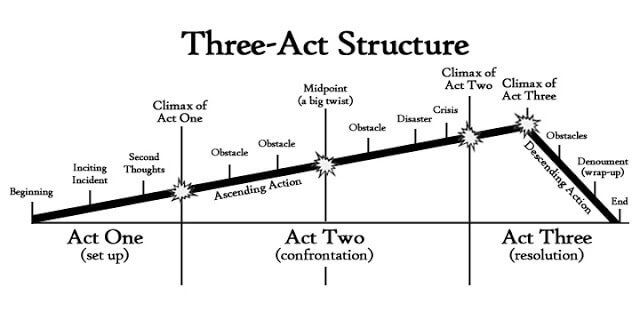
The three act structure is a tale as old as time. This is the classic beginning, middle, and end plot where the middle chunk of the story is twice as long as the set up and the resolution. If you’re looking for a plot structure that allows a lot of room for pantsing as you write, this might work well for you, if you’d like more structure, check out the other methods below.
Four Act Structure
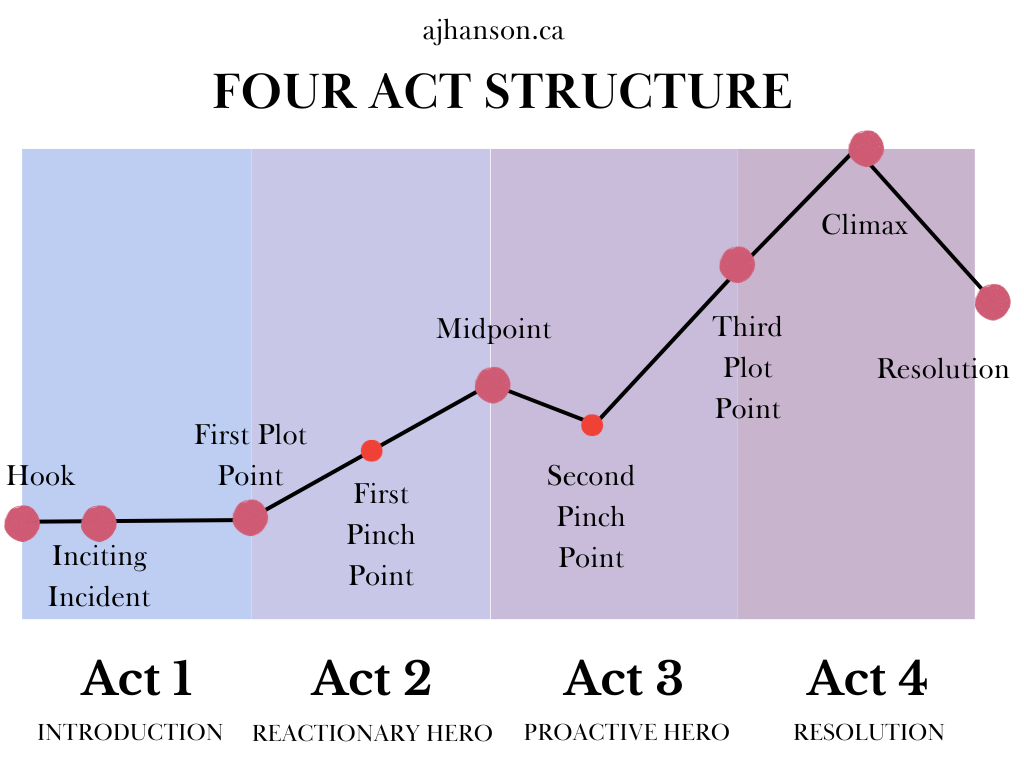
The four act structure is similar to the three act structure but the middle is split into two separate acts. Personally, I love using this structure when I’m brainstorming the bones of a story. I’ll often plot a story using the four acts before using another more complex structure to flesh it out.
Hero’s Journey

The Hero’s Journey (also known as the Universal Storyline or the Monomyth) is developed from Joseph Campbell’s book, The Hero with a Thousand Faces (which had 17 story beats) and then was refined by Christopher Vogler in his book The Writer’s Journey (these 12 story beats).
Character Driven Hero’s Journey

The Character Driven Hero’s Journey was developed in response to the argument that The Hero’s Journey can be too plot driven. This method maps the character’s emotional journey alongside the traditional beats of The Hero’s Journey. See Allen Palmer’s blog post for a full explanation.
Heroine’s Journey

The Heroine’s Journey was developed by Maureen Murdock in response to the argument that The Hero’s Journey was too focused on a male protagonist. When confronted with this concept in 1983, Joseph Campbell reportedly said that, “Women don’t need to make the journey. In the whole mythological journey, the woman is there. All she has to do is realize that she’s the place that people are trying to get to.”
Needless to say, women protagonists can absolutely have journeys and Maureen Murdock created this structure to focus on the female protagonist. For a more thorough explanation, see this blog post.
However, there’s the argument that gendering the protagonist isn’t helpful at all, which brings us to the next structure.
Virgin’s Promise

The Virgin’s Promise was developed by Kim Hudson where the Virgin is a feminine archetype can be either a male or female protagonist.
Melanie Marttila wrote a great explanation of this structure in this blog post.
For more in-depth explanation, see Kim Hudson’s book, The Virgin’s Promise: Writing Stories of Feminine Creative, Spiritual, and Sexual Awakening.
Save the Cat
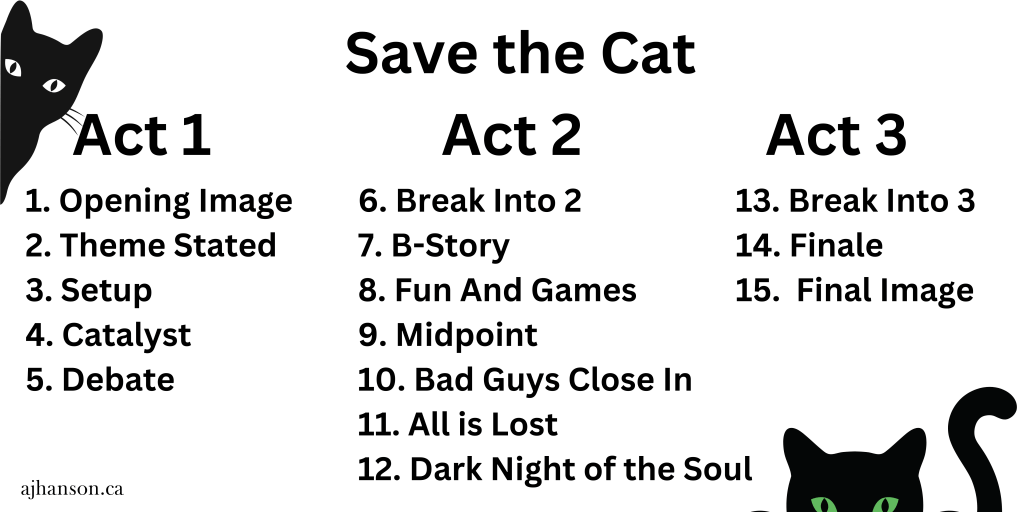
The Save the Cat method was originally developed by Blake Snyder for writing screenplays and then was further refined for novel writing by Jessica Brody. Save The Cat includes 15 story beats (with the finale broken down into a further five by Jessica Brody). Some of the beats include multiple scenes or chapters (such as Fun and Games and Bad Guys Close In), while others are single scene beats (such as Theme Stated). Save the Cat is a great method for the analytical writers out there who want to know exactly what percentage of the novel each beat should occur at. I’ve plotted several manuscripts using this method. I enjoy the level of guidance provided in this method, however, the Fun and Games and Bad Guys Close in sections can seem long if you don’t provide adequate conflict internally as well as externally. This method runs the risk of being plot-driven so make sure you keep your character’s arc at the forefront of your mind as you’re writing.
For more information on the Save the Cat method, check out Jessica Brody’s book Save the Cat Writes A Novel: The Last Book on Novel Writing You’ll Ever Need.
Story Genius Method
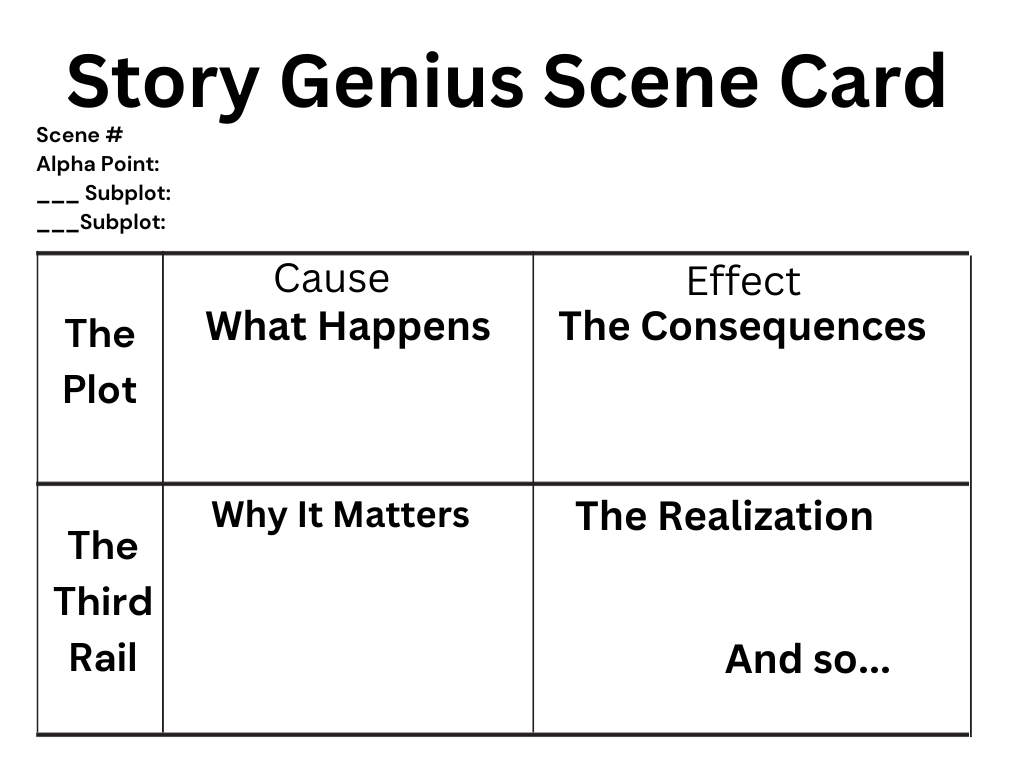
Developed by Lisa Cron, the Story Genius method shares a lot in common with the Inside Outline method. The focus of Story Genius is to ensure that the character drives the plot and the plot points all impact the character’s inner struggle. The Story Genius method involves a deep dive on your characters before getting to the full plot. You decide on the character’s goal and misbelief, then write the three most formative scenes from their backstory (which likely won’t end up in the actual book). Then, using the scene cards like the one above, you can plot out the trajectory of the novel while ensuring that the external conflict (the plot) is always related to the character’s internal growth (the third rail) and that each scene builds off the previous one (and so…).
For more information about The Story Genius method, read Lisa Cron’s Story Genius: How to Use Brain Science to Go Beyond Outlining and Write a Riveting Novel.
27 Chapter Plot
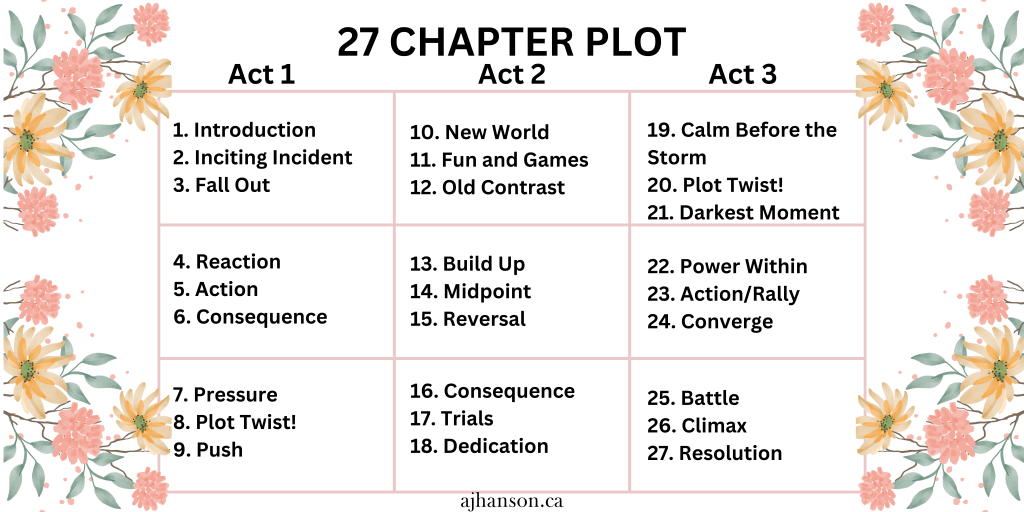
I stumbled onto the 27 Chapter method when I was feeling frustrated with the lack of guidance in the middle of the Save the Cat beats and I fell in LOVE. This is a fantastic way to plot that takes the guesswork out of what should occur during Act 2. I had to stare at it for a while to figure out how it relates to the four act structure (where the middle act is generally twice the size of the others) but I clued in that the first plot twist and the second plot twist are the two points where the second act would normally begin and end — in which case, it still works and can map to the other plot structures.
The following YouTube video by Kat O’Keeffe explains her method in a brilliant way.
If you prefer a written explanation, see this post at Kat O’Keeffe’s website.
Story Circle

The Story Circle method was developed by TV writer Dan Harmon. This method is a simplified, character-driven method based on the Hero’s Journey. The eight beats can be explained as the following:
- You – Where the character is in their comfort zone
- Need – And they want something
- Go – So they enter an unfamiliar situation
- Search – They adapt to it
- Find – They find what they wanted
- Take – They pay the price of taking it
- Return – They go back to where they started
- Change – And they are now changed
This is a great method to try if you’re focusing on your character and want a simple way to block out a plot.
7 Point Story

The 7 Point Story Structure is similar to the three act and four act structure. It’s also simplified way of looking at plot. If looking at complex plot structures makes you cringe, give this one a try!
Snowflake Method

The Snowflake Method was developed by Randy Ingermanson and was inspired by the way a fractal builds upon itself. His book How To Write A Novel Using the Snowflake Method explains his process. This method includes ten steps that build upon each other to flesh out a story. There’s a lot of steps prior to writing your first draft, but in theory, completing these should eliminate a tonne of work in the editing process and ensure you have a workable story from the start.
The Inside Outline
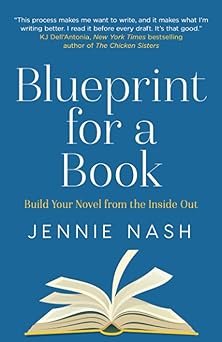
Used by all the Author Accelerator certified book coaches, the Inside Outline comes from Jennie Nash’s Blueprint for a Book. Similarly to the Story Genius method, the focus is on ensuring the character’s arc is married to the plot line and the character drives the story.
The Inside Outline is a three page document that can be used before, during, and after writing your draft to make sure your plot has the elements it needs to work.
Romancing the Beat
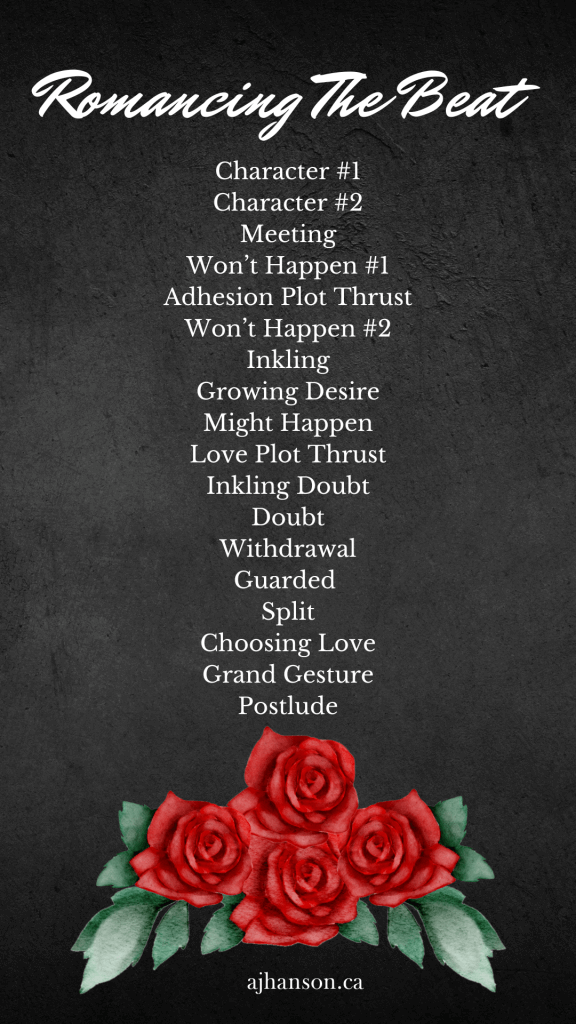
If you’re writing romance, this structure is an invaluable resource! This structure can be used for a full romance novel or a romance subplot. This structure comes from Gwen Hayes’ book Romancing the Beat: Story Structure for Romance Novels (How to Write Kissing Books).
Definitely give this book a read if you’re layering in a romance arc!
To Sum Up
Whew! We covered a lot. As you can see, there are many different plotting methods out there and no one correct way to write a novel. I hope one of these works for you and your writing process.
If you found this post helpful, please subscribe for notice of new blog posts and book news.




